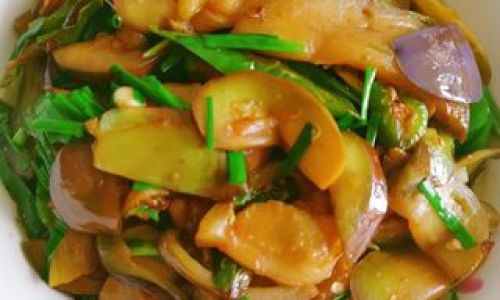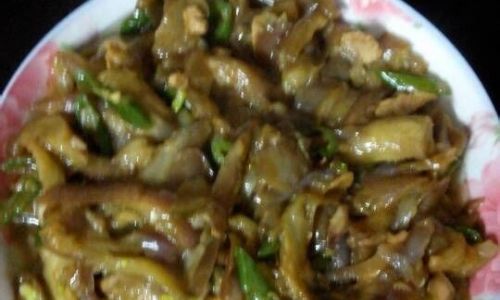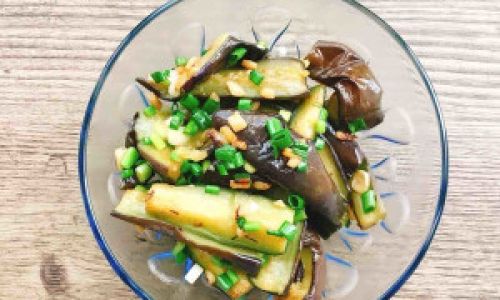Stir-fried eggplant, a dish that epitomizes the essence of Chinese cuisine, combines simplicity with profound flavor. Its soft, tender interior and slightly caramelized exterior make it a delight for the palate. While it may seem like an everyday vegetable dish, mastering the art of stir-fried eggplant, or Qing Chao Qiezi in Mandarin, requires attention to detail, the right techniques, and a balance of ingredients. This guide aims to demystify the process and empower you to create a restaurant-quality stir-fry at home.
Understanding Eggplant: The Hero of the Dish
Before diving into the recipe, it’s crucial to understand the star ingredient: eggplant. Also known as aubergine, eggplant varieties range from the small, round, and deeply purple Chinese eggplant to the larger, elongated, and sometimes lighter-skinned globe eggplant. For stir-fries, the smaller, more tender varieties are preferred as they cook faster and retain a more delicate texture.
When selecting eggplant, look for firm, smooth skin with a uniform color. Avoid those with soft spots, bruises, or wrinkles, as they indicate over-maturity or spoilage. Freshness is key; store eggplant in a cool, dark place, and use it within a few days of purchase to ensure optimal flavor and texture.
Preparation: The Foundation of Success
-
Washing and Drying: Begin by washing the eggplant under running water to remove any dirt or residue. Pat it dry thoroughly using a clean kitchen towel or paper towels. Moisture can cause steaming during stir-frying, which can lead to soggy vegetables.

-
Cutting: Cut the eggplant into uniform pieces, typically about 1-inch cubes or sticks, depending on your preference. Uniformity ensures even cooking. Remove the stem end and, if necessary, the tough skin, especially if using larger varieties.
-
Salting (Optional): Some recipes recommend salting the eggplant slices and letting them sit for 30 minutes to draw out excess moisture. While this can help reduce oil absorption, it also alters the texture slightly. If you prefer a less oily dish, pat the salted and drained eggplant pieces dry before cooking.
The Art of Stir-Frying: Techniques and Tips
Stir-frying is a quick-cooking method that requires high heat, a small amount of oil, and constant stirring to prevent burning. Here’s how to do it right:
-
Heating the Wok or Pan: Use a wok or a large, flat-bottomed skillet that can withstand high temperatures without warping. Preheat the pan over medium-high to high heat until it’s very hot. A drop of water should sizzle and evaporate immediately upon contact.
-
Oiling: Add just enough oil to coat the bottom of the pan—typically around 2-3 tablespoons for a standard stir-fry. Peanut oil, vegetable oil, or sesame oil are ideal due to their high smoke points and neutral flavors.

-
Aromatics: Before adding the eggplant, sauté aromatic ingredients like garlic, ginger, and scallions until fragrant. This step, known as “bao xiang” (aroma release), adds layers of flavor to the dish.
-
Stir-Frying the Eggplant: Add the prepared eggplant pieces to the hot pan in a single layer, if possible. Stir-fry continuously, tossing and stirring to ensure even cooking. The high heat will sear the exterior, locking in juices and creating a delicious caramelized crust.
-
Adjusting the Heat: If the eggplant starts to stick or burn, reduce the heat slightly. Conversely, if it’s cooking too slowly, increase the heat. Patience and vigilance are key.
-
Seasoning: Once the eggplant is tender and lightly browned, add seasoning. For a classic Qing Chao Qiezi, this typically includes salt, a pinch of sugar to balance the bitterness, and a dash of soy sauce for umami. Stir well to coat each piece evenly.
-
Finishing Touches: Optionally, add a splash of chicken or vegetable broth to create a light sauce, or a drizzle of sesame oil for added richness. Stir in chopped green onions, cilantro, or other herbs for freshness.

Enhancing Flavor: Optional Ingredients and Variations
While the basic recipe is straightforward, there are numerous ways to elevate your stir-fried eggplant:
- Sauces and Condiments: Incorporate hoisin sauce, oyster sauce, or chili sauce for added complexity.
- Meat or Tofu: Stir in diced pork, chicken, beef, or firm tofu for a heartier dish.
- Vegetable Mix-Ins: Add bell peppers, baby corn, bamboo shoots, or mushrooms for a colorful and nutritious medley.
- Garnishes: Finish with a sprinkle of toasted sesame seeds, chopped peanuts, or a drizzle of chili oil for added crunch and flavor.
Serving and Enjoying
Serve your stir-fried eggplant hot, as soon as it’s ready, to ensure maximum flavor and texture. It pairs beautifully with steamed rice, noodles, or even a simple green salad. Consider it a versatile side dish or a light main course, depending on your meal’s other components.
Troubleshooting Common Issues
- Soggy Eggplant: Ensure the pan is hot before adding oil and the eggplant. Stir-fry in small batches if necessary to maintain high heat.
- Overly Oily Dish: Pat the eggplant dry before cooking, and use just enough oil to coat the pan. Stir-fry over high heat to minimize oil absorption.
- Bitter Taste: Some varieties of eggplant can be bitter. Salting and draining can help, but choosing fresh, tender eggplants is the best prevention.
Conclusion: A Culinary Journey
Stir-fried eggplant is more than just a vegetable dish; it’s a journey through the flavors and techniques of Chinese cuisine. By mastering the art of stir-frying, you unlock a world of possibilities, transforming simple ingredients into extraordinary meals. With patience, practice, and a love for cooking, you’ll soon find that creating a perfect Qing Chao Qiezi is not just a recipe but a rewarding culinary adventure.
As you experiment with different ingredients, techniques, and flavors, remember that cooking is an art form that evolves with time and experience. Enjoy the process, embrace the imperfections, and savor each bite as a testament to your culinary growth. Happy stir-frying!






0 comments